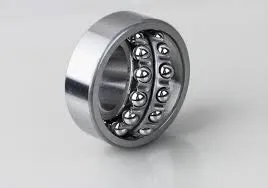
Dec . 02, 2024 02:25 Back to list
ball bearing 6203 dimensions
Understanding the Dimensions and Specifications of Ball Bearing 6203
In the vast world of mechanical engineering and machinery, ball bearings play a pivotal role in ensuring smooth and efficient operations. Among the numerous types available, the 6203 ball bearing is particularly prominent due to its versatility and performance characteristics. In this article, we’ll delve into the specifications and dimensions of the 6203 bearing and explore its applications and benefits.
Dimensions of the 6203 Ball Bearing
The 6203 ball bearing is part of the 6200 series and possesses standardized dimensions that make it a popular choice across various applications. Its specifications are as follows
- Inner Diameter (ID) 17 mm - Outer Diameter (OD) 40 mm - Width (W) 12 mm
These dimensions define the physical structure of the bearing, allowing it to accommodate axial and radial loads effectively. The 6203 ball bearing is designed with a series of balls housed in a raceway, facilitating smooth rotation and minimizing friction, which is critical for extending the lifespan of machinery.
Material Construction
Most 6203 ball bearings are constructed from high-carbon chromium steel, which enhances their durability and resistance to wear. The steel used is typically treated to improve its performance under elevated temperatures and challenging operational conditions. Additionally, some variants may feature ceramic balls or stainless steel constructions for environments that require enhanced resistance to corrosion.
Load Ratings
When evaluating the performance characteristics of the 6203 bearing, load ratings are an important consideration. The bearing is designed to handle both radial and axial loads, with the following approximate ratings
ball bearing 6203 dimensions

- Dynamic Load Rating (C) 10,500 N - Static Load Rating (C0) 6,700 N
These ratings provide essential information regarding the bearing's capability to withstand operational stresses, making it crucial for engineers and designers to select the correct bearing for their specific applications.
Applications of the 6203 Ball Bearing
Given its dimensions and robustness, the 6203 ball bearing finds application in a wide range of industries and settings. Some of the most common applications include
1. Electric Motors The 6203 bearing is frequently used in small to medium-sized electric motors where efficient rotation is essential. 2. Automotive Industry In vehicles, the 6203 bearing is often employed in components like alternators, blowers, and pumps. 3. HVAC Equipment Heating, ventilation, and air conditioning systems often incorporate the 6203 bearing due to its reliability and performance in varying temperatures. 4. Power Tools Many handheld and stationary power tools rely on the 6203 bearing for smooth operation and durability under load.
Benefits of Using the 6203 Ball Bearing
Opting for the 6203 ball bearing offers several advantages
- Efficiency The design minimizes friction, which leads to higher efficiency in mechanical systems. - Versatility Its standardized dimensions allow for easy replacement and integration into various machines. - Durability High-quality materials and construction techniques contribute to its longevity, reducing the need for frequent replacements. - Cost-Effectiveness The widespread availability of 6203 bearings makes them an economical choice for manufacturers and engineers.
Conclusion
The 6203 ball bearing exemplifies a balance of performance, reliability, and versatility that has made it a staple in many industries. Its standardized dimensions, robust construction, and suitability for a variety of applications ensure that it will continue to be a critical component in the machinery of today and tomorrow. Understanding the dimensions and specifications of the 6203 bearing is essential for engineers, designers, and maintenance professionals who aim to optimize mechanical systems and improve overall operational efficiency. As technology advances, bearings like the 6203 will likely continue to evolve, further enhancing their performance and applications.
Latest news
-
Grooved Ball Bearing Design and Functionality
NewsJun.04,2025
-
Concrete Mixer Bearing Load Capacity Testing
NewsJun.04,2025
-
6004 Bearing Dimensions in Robotic Joint Designs
NewsJun.04,2025
-
Advantages of Single-Row Deep Groove Ball Bearings
NewsJun.04,2025
-
Applications of Deep Groove Ball Bearings in Automotive Systems
NewsJun.04,2025
-
Innovations in Bearing Pressing Machine Design
NewsJun.04,2025
